Vibrant Cityscapes under Sung Eun Kim’s Brushes
The towering skyscrapers lining up along with cars on the narrow streets of San Francisco with familiar quintessential subjects such as cable cars, the Transamerica Pyramid building, the Marina District or the Bay Bridge in the background are some of the signature paintings by Sung Eun Kim. After having amassed a strong foundation in the fine arts and architectural perspectives training, Sung has exhibited careful consideration to the details and the relationship among “light, space, and depth” in his paintings. Consequently, Sung possesses a unique style of hyperrealism accomplished by creating dimensional landscapes of the city with precision and beauty. In his Texture series he further creates contrasting visual illusion and sophisticated textures on the city scenes by painting glinting reflections from the sun on the buildings. Sung is an immigrant from S. Korea and a long-time resident of San Francisco who vividly captures the feel of this iconic US city in the 21st century.

Sung’s still life paintings also display his keen observation of dimensionality and color. His close-up study of a human, fruit, or animal demonstrates his ability in rendering reality with strong motifs and contrast of colors which gives life, depth, and meaning to his subjects.
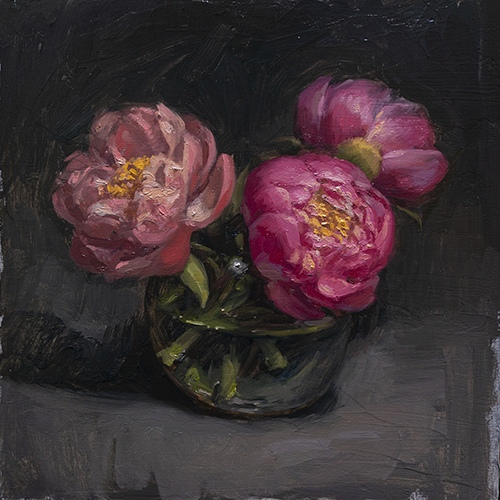
We are honored to be able to interview Sung who has established himself as an outstanding contemporary artist in painting cityscapes and still life in the Bay Area.

Q: Your paintings, especially the cityscape of San Francisco, are truly extraordinary. Please share with us your training in fine arts and architecture.
A: I began my art training when I was 12 years old in South Korea. I went to the Art Highschool in Daejeon South Korea where I learned most of my foundation skills and techniques. To get into art college in Korea, it was very competitive back then so we were trained pretty hard. I got a chance to study in the USA at that time so I decided to apply for the art college in San Francisco, CCA (California College of the Art). Also, I wanted to be an architect designer actually during my freshman year so I was always looking to get inspiration from building structures of old and new designs. But I was more having fun painting them than designing them so I stuck with painting. The Fine Art department in CCA was very concept pure so I felt a lack of training on my realistic skill so I decided to study for my Master’s degree from the Academy of Art University which has a more profound program for realistic painters.
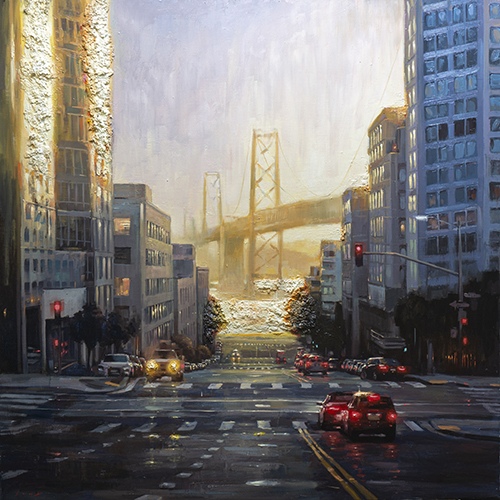
Q: One of your paintings, titled “Bay Bridge Glow,” is glorious and breathtaking. It is one from your Texture series. Please tell us about this series, especially the illusions you tried to create.
A: ‘Light, space, and depth’ is my main theme where I’m actively searching for a better way to depict the sense of these elements. I was intrigued with creating the sense of the light on the flat surface with paints and I started to relate to that with painting texture. And I wanted to go even more to create a sense of three-dimensional ‘feeling’. In a realist painting technique with all that foundation skill, the main goal is to create a sense of three dimensions by using light and dark contrast, color accuracy, color saturation, and edge controls. But I wanted to take the creation of the three-dimensional sense more literally. So I was looking for a way to build the textures that can not only visually but also physically come forward and that’s how the texture series came out.
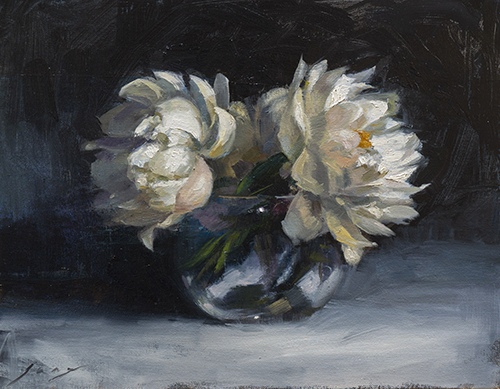
Q: What are the major differences and similarities between painting still life and cityscapes?
A: In a way of creating three elements of light, space, and depth, still life and cityscape are the same for me. They have different lighting, details, and atmosphere. Cityscape has more accidental elements and non-setup sequences, while still life is more designed and articulated by me. But the way I treat them with a specific mindset is the same. I go a bit tight on details for still life painting though.
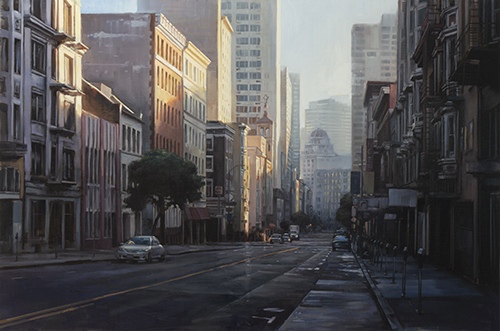
Q: You are an immigrant from Korea and now reside in San Francisco. How does the mixture of cultural backgrounds influence your painting style?
A: The main thing that affects my art by living in the Bay Area is the light. Crossing the Bay Bridge during the everyday commute and witnessing the sunrise and sunset of the bay is one of the privileges of living here.
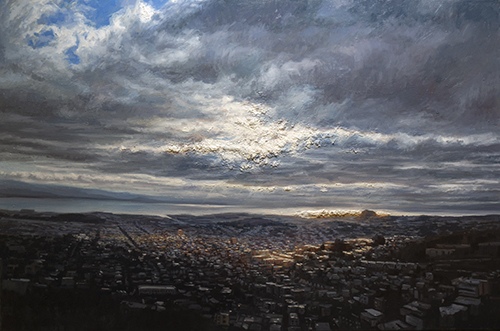
Q: You have been teaching fine arts at various art institutes in the Bay Area including the San Francisco Art Institute. As an experienced art teacher, what are some pivotal pieces of advice you often give to your students?
A: The main challenge that a lot of students have is finding a unique style that doesn’t duplicate or overlap with others. So many of them started to look for something that looks good and successful and projects that image into their works, and then they all ended up looking the same. I think the specific style or the way of painting or drawing comes out naturally, more like personality. My advice on it is to try to find the elements or subject that you are most attracted to and inspired by and figure out why that image is coming to you. And then try to reproduce that image with your own interpretation over and over and without knowing, you will have your own style and subject matter.

Q: Please share with our readers your future plans and where they can view your paintings in person.
A: My works are currently on view at two locations, Hang Art in San Francisco, CA, and Waterhouse Gallery in Santa Barbara, CA. Hang Art gallery recently opened its outpost location at Fort Mason by the North Beach area where the air comes through widely so that people come in to see the paintings more safely. I’m constantly painting and sending new works to these two galleries.
We thank Sung’s thorough explanation about his art and how to become a genuine artist. You can appreciate Sung’s paintings in person at the galleries listed above or visit his Instagram.
Sung’s Instagram